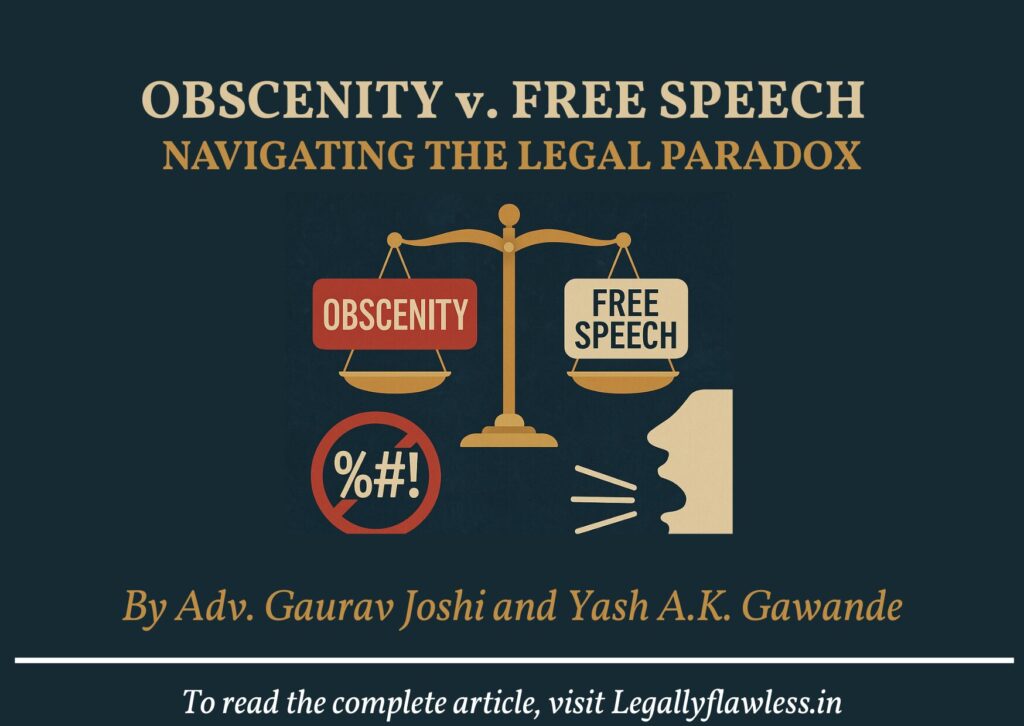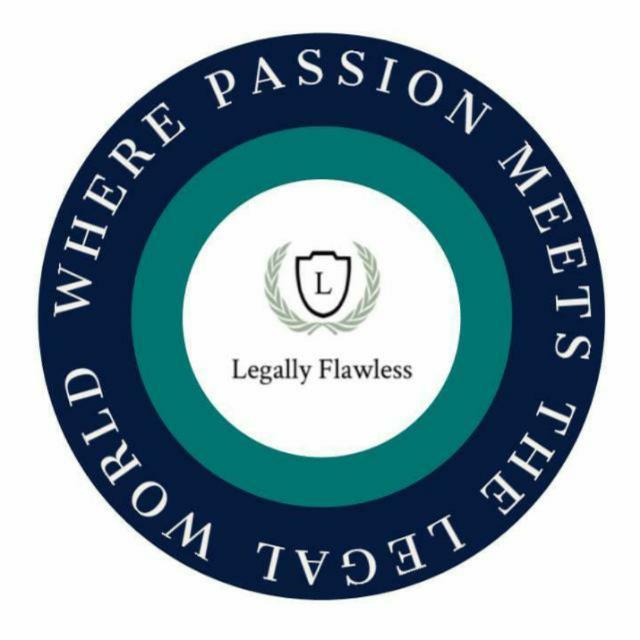
Table of Contents
Introduction
Paradoxes exist in every field, offering a unique lens to examine the complexities of the world-often with a hint of humour. By exposing flaws and contradictions in widely accepted definitions and systems, they underscore the need for deeper inquiry. A prime example is the tension between freedom of expression and obscenity, where legal and societal boundaries constantly clash.
Freedom of expression is a fundamental right and a cornerstone of democracy, yet it frequently clashes with the concept of obscenity. Obscenity, often linked to sexually explicit material, lacks a precise legal definition, leaving its interpretation contested. While numerous scholars have debated its meaning, little consensus exists on its true nature. This ambiguity imposes limits on free expression, preventing it from being an absolute right and requiring individuals to navigate the constraints of societal norms.
This paradox recently came into the limelight with the controversy surrounding India’s Got Latent Show, where one of the panelists made a vulgar comment, sparking public outrage in the country. The controversy received mixed responses, with one side labeling it as a threat to public decency and the other defending it as an expression of artistic freedom and entertainment. This incident raises important questions: to what extent can freedom of expression be extended and what constitutes obscenity?
This article is an attempt to understand the laws surrounding obscenity within the framework of freedom of speech and expression in light of various judicial interpretations and the recent controversy.
Tracing the Legal History of Obscenity through Judicial Precedents
The grassroots of obscenity laws in India could be traced back to the colonial time, when laws regarding obscenity were introduced in the Indian Penal Code (I.P.C.) with Section 292 penalising the offence of obscenity which was based on the restrictive Hicklin Test from Regina v. Hicklin.[1] However, at the same time it can be seen that certain works were removed from within the ambits of the definition of obscenity by the Code itself, if they fall within the confines of public interest. The term public interest includes matters in the interest of literature, science, history or religion.
Over time, through its judgments, the Indian judiciary has consciously moved away from the archaic Hicklin Test. Recognizing that societal norms evolve, the courts have acknowledged that “the concept of obscenity changes with time – what was once considered obscene may not remain so in a different era.” This progressive approach reflects the judiciary’s attempt to adapt to contemporary values while balancing freedom of expression with societal sensibilities.
The newly enacted Bharatiya Nyaya Sanhita (BNS), which replaces the I.P.C., defines obscenity as “lascivious, excessively sexual, or corrupting content,” punishable under Sections 294, 295, and 296. In the cyber realm, obscenity specifically concerns the publication or transmission of sexually explicit material online, addressed under Section 67 of the Information Technology Act, 2000. Despite these legislative reforms, the judiciary continues to grapple with the fundamental challenge of balancing individual freedoms against prevailing societal standards.
Indian judicial history reveals an enduring struggle to define obscenity with precision. Through landmark precedents, our courts have consistently held that obscenity must be evaluated contextually – examining the specific facts and circumstances of each case rather than applying rigid standards. This jurisprudential approach reflects the delicate act of balancing between: protecting public morality and safeguarding freedom of expression.
Ranjit D. Udeshi v. State of Maharashtra (1965)
Ranjit D. Udeshi[2] is a landmark case that stands as the seminal judicial precedent on obscenity in Indian jurisprudence. The case involved the prosecution of Udeshi, a partner in a bookstore firm, under Section 292 of the Indian Penal Code for allegedly selling copies of D.H. Lawrence’s controversial novel Lady Chatterley’s Lover.
In his defence, Udeshi advanced two significant constitutional arguments: firstly, that Section 292 violated his fundamental right to freedom of speech and expression under Article 19(1)(a) of the Constitution; and secondly, that the work should be judged in its entirety rather than through isolated passages. This case established crucial principles for evaluating obscenity while balancing literary merit against community standards.
The Court employed the controversial Hicklin Test- a Victorian-era legal standard that evaluates obscenity based on whether material might “deprave and corrupt those whose minds are open to such immoral influences.” Applying this restrictive framework to D.H. Lawrence’s Lady Chatterley’s Lover, the Court declared the novel obscene, focusing narrowly on isolated passages rather than considering its literary merit as a whole. This 19th century test, developed in Regina v. Hicklin (1868), allowed courts to ban works based on their potential effect on the most impressionable readers rather than contemporary community standards.
Bobby Art International v. Om Pal Singh Hoon (1995)
In Bobby Art International[3], the Supreme Court of India addressed significant questions regarding artistic freedom and obscenity in its examination of the controversial film Bandit Queen. The biographical portrayal of Phoolan Devi had drawn severe criticism for its graphic depictions, with opponents condemning it as “abhorrent and unconscionable” and “a slur upon the womanhood of India.”
In its landmark ruling, the Court upheld the filmmakers’ right to freedom of expression under Article 19(1)(a) of the Constitution. The Bench reasoned that the scenes featuring nudity served a legitimate narrative purpose in illustrating the protagonist’s harrowing experiences, and that artistic expression could not be curtailed merely because some viewers found the content objectionable. This decision marked an important evolution in India’s jurisprudence on balancing creative freedom with societal sensibilities.
The Supreme Court expressed the following :
“First, the scene where she is humiliated. stripped naked. paraded made to draw water from the well within the circle of a hundred men. The exposure of her breasts and genitalia to those men is intended by those who strip her to demean her. The effect of so doing upon her could hardly have been better conveyed than by explicitly showing the scene. The object of doing so was not to titillate the cinemagoer’s lust but to arouse in him sympathy for the victim and disgust for the perpetrators.”
Aveek Sarkar v. State of West Bengal (2014)
The Aveek Sarkar Case,[4] marked a jurisprudential shift in India’s obscenity law. In this pivotal judgment, the Supreme Court abandoned the archaic Hicklin test in favour of the contemporary community standards test. The case centred on an Indian publication that reproduced a photograph from a German magazine showing tennis champion Boris Becker posing nude with his dark-skinned fiancée, actress Barbara Feltus. The image, taken by Feltus’ father, accompanied an article portraying Becker as an advocate against racial discrimination, symbolizing love over prejudice.
When challenged under Section 292 of the IPC and Section 4 of the Indecent Representation of Women (Prohibition) Act, 1986, the Court made several crucial determinations:
- Rejected the Hicklin test for its problematic focus on isolated passages and their potential effect on the most susceptible readers;
- Adopted the community standards test, acknowledging that concepts of obscenity evolve with time;
- Held the photograph non-obscene as it neither aroused sexual passion nor corrupted viewers; and
- Recognized the image’s social value in promoting racial harmony and interracial marriage
This decision established that artistic works must be evaluated as a whole within their proper context and contemporary societal norms, rather than through Victorian-era moral frameworks.
AIB Roast Controversy (2015)
The Hon’ble High Court of Bombay in its ruling in the AIB Roast controversy offered significant judicial clarification on the distinction between vulgarity and obscenity in Indian law. While acknowledging that the comedy show featuring Bollywood actors Arjun Kapoor and Ranveer Singh contained undeniably vulgar content, the Court protected the comedians from arrest by emphasizing that vulgarity alone doesn’t constitute obscenity.[5]
The judgment drew a crucial legal distinction – vulgarity refers to language or behavior that may be crude, offensive or provoke disgust, while obscenity under Section 292 IPC requires material that tends to deprave or corrupt susceptible individuals. By restraining police action, the Court affirmed that while socially objectionable content may warrant criticism, it doesn’t automatically meet the legal standard for obscenity. This decision serves as an important precedent protecting freedom of expression, particularly for satirical and comedic content, while maintaining appropriate legal boundaries for genuinely harmful material.
India’s Got Latent Case Study
India’s Got Latent, a talent show started by renowned stand-up comedian Samay Raina, offers a national platform for contestants to showcase their skills. However, on 10th February 2025, the show faced multiple allegations following an episode featuring guest judges including podcaster Ranveer Allahbadia (popularly known as BeerBiceps), YouTuber Ashish Chanchlani, social media influencer Apoorva Mukhija, and Jaspreet Singh.
During the episode, Allahbadia made a controversial remark, stating:
“Would you rather watch your parents have sex every day for the rest of your life or join in once to make it stop forever?”
This statement made by Ranveer Allahbadia sparked a nationwide outrage leading to various allegations against the show’s creators for primarily using “vulgar and obscene” language, which has been labelled as offensive by various stakeholders, including the government. The Mumbai Police registered an FIR against YouTuber Ranveer Allahbadia, comedian Samay Raina, and Apoorva Makhija over controversial remarks made on the show India’s Got Latent.
This controversy however sparked a contrast debate between public decency and artistic expressions. There was a divergence between people, where one side helping defend Ranveer Allahbadia with the idea of artist liberty and free speech, while the critics, accusing him with corrupting youths with his influence. This case now has become a cornerstone for freedom of expression and with an FIR filed, the obscene laws are criticized for applying to the new modern media, requiring a new defined set of legal framework with the context of digital landscape.
Note: The question of whether the above statement constitutes the offence of obscenity or not is presently sub-judice before the Hon’ble Courts.
Balancing Obscenity and Freedom of Expression
This conflict between freedom of expression and obscenity arises from the interests of individual liberty and societal morality. Freedom of expression is essential for creativity, dialogue and thought, while obscenity laws are required to protect public decency and prevent the spread of material which could corrupt an individual. This conflict is often seen in cases involving art, literature, and digital media, where the boundaries of acceptability are often pushed.
From an international perspective, especially in the United States, the U.S Supreme Court uses the community standard test, also known as Miller Test,[6] which assesses whether a work appeals to prurient interests, depicts sexual conduct in an offensive manner, and lacks serious literary, artistic, political, or scientific value.
The Supreme Court of Canada in Regina v. Butler,[7] held that the dominant test is the “community standards problems test”. The Court held that explicit sex that is not violent and neither degrading nor dehumanizing is generally tolerated in the Canadian society and will not qualify as the undue exploitation of sex unless it employs children in its production. The Court held, in order for the work or material to qualify as “obscene”, the exploitation of sex must not only be a dominant characteristic, but such exploitation must be undue.
Conclusion
The conflict between freedom of expression and obscenity will persist until there are clear moral guidelines that evolve alongside cultural and societal norms. The examined jurisprudence reveals the Indian judiciary’s persistent struggle to establish a coherent framework for defining obscenity within the context of free expression. Despite landmark rulings that have progressively moved from the antiquated Hicklin test to more contemporary community standards, the legal position remains ambiguous. This is because there is no strict formula for the test of obscenity and it is judged on a case to case basis. Thus, the ongoing uncertainty reflects the inherent tension between constitutional protections for creative freedom and society’s evolving moral sensibilities.
The Supreme Court has emphasized that context and the underlying message are crucial in determining what constitutes obscenity, and that nudity alone cannot be deemed obscene. As previously noted, the definition of obscenity varies across cultures. Over time, obscenity laws will play a vital role in maintaining public order and safeguarding societal values. However, a balance must be struck between enforcing these laws and upholding the principles of freedom of expression. Such laws should be applied judiciously, taking into account societal progress, evolving cultural norms, and the importance of artistic expression.
While courts have demonstrated increasing willingness to consider artistic merit and social context, the absence of clear, consistent standards continues to pose challenges for both creators and law enforcement. The judiciary’s inability to crystallize a definitive test for obscenity leaves this critical aspect of free speech jurisprudence in a state of flux, requiring case-by-case determinations that often yield unpredictable results.
It is crucial for the Indian judiciary to find better and more definitive alternatives by establishing consistent, uniform, and stringent standards for obscenity, especially given the increasing availability of such material in the digital era. Without clear judicial guidance on obscenity, writers, sellers, distributors, and possessors face significant uncertainty. Moreover, the lack of clarity allows law enforcement agencies to exploit this ambiguity, potentially targeting individuals perceived as transgressors and creating opportunities for harassment by the police.
This article is authored by Mr. Gaurav Joshi, Advocate at District & Sessions Court, Bhopal and Mr. Yash A.K. Gawande, student at Adv. Balasaheb Apte College of Law, Mumbai
[1] LR 3 QB 360
[2] 1964 INSC 171.
[3] 1996 (4) SCC 1
[4] 2014 (4) SCC 257.
[5] Mugdha Dwivedi and Aditya Pranav Dwivedi, “Obscenity and the Legal Ambiguity in India: A Critical Analysis” Available at: https://www.ijfmr.com/papers/2024/5/28837.pdf
[6] Miller v. California, 413 U.S. 15 (1973).
[7] [1992] 1 S.C.R. 452
All efforts are made to ensure the accuracy and correctness of the information published at Legally Flawless. However, Legally Flawless shall not be responsible for any errors caused due to oversight or otherwise. The users are advised to check the information themselves.


